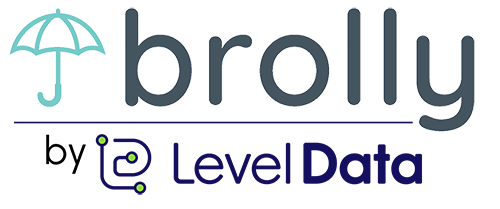How Data can Help Special Education Leaders be Proactive About Staffing

The process of hiring and staffing in special education is both complicated and uncertain. Since the needs of students with disabilities are changing per their IEPs, staffing targets are always moving. The realities of budgeting, licensing, and shortage areas mean that you must know what staff you will need to hire well ahead of the close of the school year. You are probably making the choices for the upcoming year when there is still snow on the ground. Without data on your students and staff it can be difficult to predict the hiring needs for your special education program.
Data transparency allows you to be proactive in attracting and hiring the best possible staff based on your student needs. Here’s how data can help you take a proactive approach to staffing.

Student Enrollment Trends
By utilizing your student information system, you can see changes in enrollment that will impact staffing. You can also connect with sending districts to anticipate service needs in advance.
Within your district you might observe there are fewer students requiring self-contained programs those on the Autism Spectrum. Going forward, you won’t need as many teachers and paraprofessionals to staff that program. Using this information, you may decide to invest in training your current staff in ASD practices. Or you may consider hiring teachers and paraprofessionals already experienced supporting students with ASD in the general education classroom.
Another area to explore is the number of students receiving each service and the staffing requirements for those services. An integrated co-teaching classroom might only be permitted to have twelve students with IEPs. Your data shows that there are fifteen students requiring this service. After reviewing student IEPs, you would need to decide to open an additional class or move students based on their needs to other services. With two classes, you would need additional hires.
Related Service Provider Schedules
Service provider schedules highlight trends in current services. They can also help identify areas to add or reduce services. Brolly can help you see how your providers are allocating time to various services and whether they have more bandwidth. Using the interactive dashboard, you can see all your student’s progress and service minutes at a glance.
If progress is inadequate despite service provision, you might consider hiring another provider to support additional service needs. The opposite could also be the case. If students are rapidly mastering goals, they might be ready for less services. You could consider moving the student to a group session. This would also mean a reduction in your provider’s sessions. This detailed data can help you to anticipate your hiring needs.
Just as enrollment can fluctuate, related services can change year to year. Unfortunately, related services like occupational therapy can be difficult to recruit for due to shortages and specialized expertise. This is an area to start hiring for early to ensure there are no interruptions in services or a need for compensatory services down the road.
Review your current providers’ schedules early and often to see where there’s a need for more services. This can also help you anticipate staffing and scheduling changes. If the number of students needing a related service is dwindling, perhaps you can reduce a provider’s schedule. You can identify support they can provide in the community or share them with another school.

Student Progress
Your service providers are your eyes and ears on the ground when it comes to tracking student progress. Their progress can be an early indicator of hiring needs. It can help you identify a likely need for less services, more services, or a change in the least restrictive environment. You can gain valuable hiring insights by checking in with your providers and identifying data-based trends on a regular basis. Brolly provides a single view for student progress to support this conversation and help anticipate hiring needs.
More Tips for Using Data to Make Staffing Decisions
Special education leaders make difficult decisions to meet the needs of all students through staffing. Reviewing data throughout the year will inform decisions about how to best allocate your staffing resources.
Here’s a few ways to use data to optimize resources.
Sharing Staff with District Schools
As you anticipate trends for the upcoming school year, it might become clear that you will not require a full-time staff member in a specific area. However, it’s difficult to hire a part time staff member, especially in a shortage area. One solution is to create a central location for schools in the county or district to share needs – like a distribution list or shared spreadsheet.
It can also be prudent to cast a wide net for anticipated needs and shortage areas. Although you might have a clear idea of your staffing requirements, you can’t always anticipate unexpected departures of staff. It’s helpful to interview for shortage areas as a backup. If you interview an excellent physical therapist, you may be able to find a district with this need as well to share the provider.
Supporting Student Needs with Alternative Resources
At times, you might find that staff is not required due to investments in new equipment or technology. For example, a student with mobility challenges may have had a one-to-one paraprofessional to help them around the building. You decide to purchase equipment to allow them greater independence. This also reduces the need for the paraprofessional. A student that requires a one-to-one paraprofessional to support note taking and reading aloud of text may be able to use technology instead.
Finally, a student may have an IEP that specifies the need for a special education teacher in his math class for testing accommodations and modifications. After reviewing his academic needs, the IEP team determined that the teacher could provide consultative services to modify materials. She could also provide testing accommodations with other students as needed. This would free up this special education teacher to serve others. All these examples will require collaboration amongst staff, but also allow you to create an environment based on student need where independence flourishes.
Reimagining Roles for Underutilized Staff
As you are hiring and reviewing current staff roles, consider how to keep your best people fully scheduled. If you are anticipating reducing staff in a certain area, you can explore other ways to utilize their certification(s) to meet the needs of other learners in your district. As you are hiring new staff, be sure you consider the overall utility in different roles since trends in needs are always evolving when it comes to serving students with IEPs.
For example, your speech provider mandated caseload has been dwindling, but she is trained in reading interventions and social skills groups. In addition to her speech caseload, she could provide services in these other areas. This could free up other staff to teach general education sections or fill a position that was vacant.
Data based hiring and staffing processes help you more effectively meet the needs of your students with IEPs. Being proactive in reviewing data and starting the hiring process early allows you to collaborate with colleagues and optimize your limited resources. Data will empower you to have the best hiring season yet!

